30 Fulfilling Hobbies for Women Over 30 (That Aren’t Just Self-Care Buzzwords)
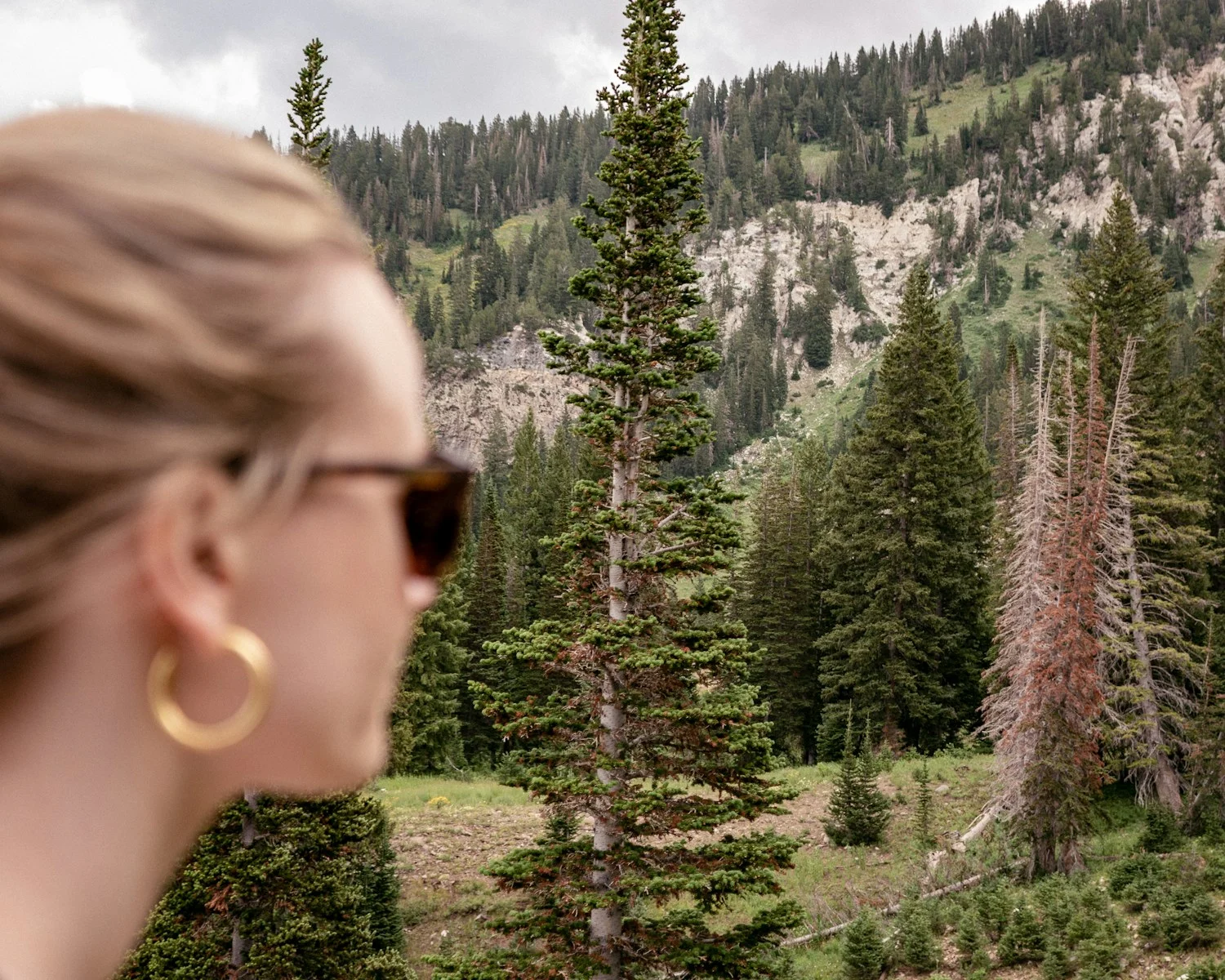
You’ve reached that moment—thirty-something and craving substance beyond face masks and bubble baths. Real fulfillment doesn’t come from Instagram-worthy self-care rituals; it emerges when your hands are dirty from soil, your lungs burn from mountain air, or your heart races from spotting a rare warbler at 6:47 AM. These aren’t hobbies designed to look good in stories. They’re pursuits that rewire your relationship with time, challenge, and possibility in ways that will surprise you.
Hiking: Find Your Trail and Your Pace
When your feet first touch the trailhead gravel at 7:30 AM, you’re crossing more than a threshold between pavement and path—you’re stepping into a practice that will reshape how you move through the world.
Start with local nature preserves. Two-mile loops. Nothing heroic yet—just consistent Tuesday morning appointments with elevation and silence. Your lungs will protest initially, burning with that particular ache of rediscovered capacity. Good. That’s adaptation beginning.
Pack essentials methodically: sixteen ounces of water, electrolyte tablets, energy bar broken into thirds. Wear moisture-wicking socks, broken-in trail shoes with ankle support. Check weather at 6:45 AM, always.
Month two brings hunger for steeper grades, longer distances. Trust this progression. Your body’s intelligence emerges through repetition—balance improving on root-crossed paths, breathing deepening with each ascent.
The trail teaches patience. With terrain. With your own unfolding strength. Consider pairing your hiking practice with bird watching, which transforms your awareness from just the path beneath your feet to the ecosystem surrounding you.
Gardening: Grow Something Beautiful (And Maybe Profitable)
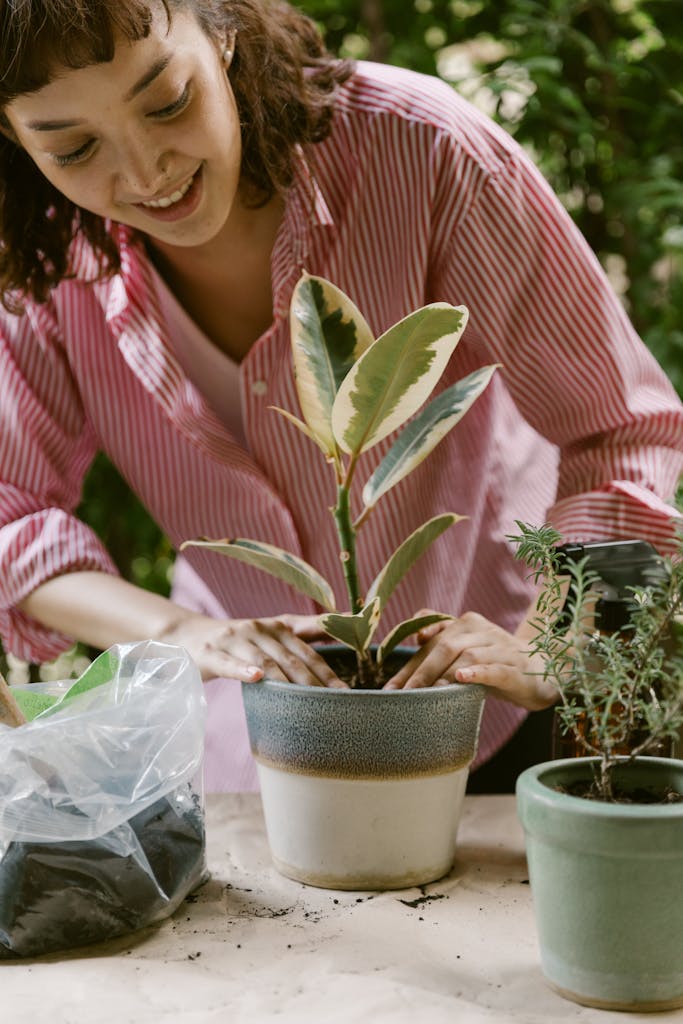
You’ll discover that gardening transforms from weekend hobby into soul-sustaining practice the moment you choose between cut flowers that brighten January mornings, herbs that elevate Tuesday dinners, or vegetables that reduce your grocery bills by thirty percent.
Start with three square feet of soil—whether it’s a corner of your yard, a raised bed kit, or even containers on your apartment balcony—because small beginnings create manageable success while your confidence grows alongside your seedlings.
Think beyond personal harvest from day one, since that abundance of tomatoes in late July or armfuls of sunflowers in September can easily become side income at farmers markets, transforming your green thumb into both passion and profit.
The rhythm of planting, tending, and harvesting becomes a teacher that forces you to surrender control and work within nature’s timeline rather than your own demanding schedule.
Choose Your Garden Type
Before your hands ever touch soil, the garden that will flourish in your space already exists—you simply need to recognize its natural tendencies and match them with your deepest intentions.
Study your light patterns for seven consecutive mornings, noting shadows at 9 AM, noon, and 4 PM. Six hours of direct sun? Vegetables will thrive. Dappled shade beneath trees? Herbs like parsley and chives will reward you. Only morning light? Cut flowers such as cosmos and zinnias still bloom abundantly.
Consider your harvest dreams. Vegetable gardens demand daily August attention—worth it for sun-warmed tomatoes in September. Herb gardens forgive weekend neglect while gifting you with basil’s perfume each evening. Cut flower beds? Pure joy. Saturday morning bouquets that cost florists forty dollars.
Match ambition to available time. Honest assessment prevents disappointment.
Start Small, Think Big
Three terracotta pots on your kitchen windowsill hold more potential than most backyard dreams—they’re your proving ground, your first quiet victories before dawn breaks over larger ambitions.
Start with basil, cherry tomatoes, and lettuce. Week one: seeds pressed into soil with your fingertips, labels written in careful block letters. By day fourteen, green shoots emerge like whispered promises. Your morning coffee routine now includes checking moisture levels, rotating pots toward southern light.
Success here builds confidence for raised beds, greenhouse dreams, farmers market booths. Those first tender leaves you’ll harvest at sunset, thirty-seven days after planting, taste like accomplishment itself. Your neighbors will notice. They’ll ask questions, request cuttings.
Small victories compound. Today’s windowsill becomes tomorrow’s garden empire, one careful seed at a time.
Market Your Extra Harvest
When your basil plants tower eight inches above their starter pots and cucumber vines cascade beyond window boxes, surplus becomes opportunity—your kitchen can’t consume what passionate hands have grown.
Transform abundance into income through these proven channels:
- Saturday farmers markets – Reserve booth space ($15-30) by March for summer harvest season
- Instagram micro-business – Document growth progress, tag #localharvest and neighborhood hashtags
- Workplace sales – Email colleagues Tuesday mornings with weekly harvest lists
- Community-supported subscriptions – Offer monthly herb bundles to five neighbors at $12 each
Start with herb bundles—basil, rosemary, thyme tied with twine. Price at $3-5 each. Your hands, which once merely tended, now calculate profit margins. Each transaction validates months of dawn watering, afternoon pruning. The soil teaches patience; the market rewards persistence.
Birdwatching: Patience Meets Wonder
As you settle into the weathered wooden bench at 6:47 AM, binoculars hanging familiar and warm against your chest, the world transforms into a theater where patience becomes your most valuable currency. The cardinal’s crimson flash against winter bark rewards your stillness. Your breathing slows, syncing with nature’s rhythm.
Start simple: download Merlin Bird ID, pack water, choose one familiar park. Arrive before sunrise when birds are most active. Position yourself downwind. Wait.
The mourning dove’s soft coo at 7:23 AM teaches you something profound about presence. Each species carries its own timeline, its own secrets. You’re learning their language now, one call at a time. Your phone stays silent in your pocket.
This isn’t about conquering birds—it’s about joining their world, becoming worthy of their trust. Focus on your feet connecting with the ground during each approach, using walking meditation to transform your birdwatching routine into a mindfulness practice that anchors you to the present moment.
Foraging: Connect With Ancient Food Wisdom
You’ll discover that foraging transforms your relationship with the landscape around you, teaching you to read the subtle signatures of edible treasures hidden in plain sight—from the heart-shaped leaves of violet plants that announce themselves each March to the distinctive three-part clusters of elderflowers that emerge precisely when spring afternoons stretch past 7 PM.
Before you venture beyond your backyard with basket in hand, you must master the fundamental safety protocols that separate confident foragers from reckless gatherers, because misidentification isn’t just disappointing—it’s dangerous.
The legal landscape of foraging varies dramatically from state parks that welcome plant collection to private properties where even picking a single dandelion constitutes trespassing, so you’ll need to research local regulations with the same intensity you’d apply to studying plant identification guides.
Once you’ve identified safe, edible plants like ginger root, you can transform your foraged finds into remedies such as ginger tea for nausea, which works as effectively as prescription anti-nausea medications when prepared by grating 1-2 teaspoons of fresh ginger per cup and steeping for ten minutes.
Wild Edible Plant Basics
Before you take your first tentative step into the ancient practice of foraging, understand that you’re not simply learning to identify plants—you’re reclaiming a birthright that spans millennia. Your grandmother’s grandmother knew these secrets instinctively.
Start with these foundational species:
- Dandelion – Every part edible, bitter leaves best harvested in early spring
- Plantain – Nature’s bandage, ribbed leaves perfect for minor cuts
- Wild garlic – Unmistakable onion scent when crushed between fingers
- Clover – Sweet purple blooms make excellent tea, leaves add protein
Never consume anything you can’t identify with absolute certainty. Carry field guides specific to your region. Learn one plant completely before moving to the next. Your ancestors survived because they understood this patience. Honor their wisdom.
Safety and Legal Considerations
The moment you step beyond your backyard with foraging intentions, you enter a complex web of property rights, conservation laws, and liability concerns that can transform your peaceful plant-gathering expedition into a legal nightmare.
Research local regulations first. Many parks prohibit plant collection entirely, while others require permits for specific species. Private property requires explicit permission—always. Call ahead to ranger stations, check municipal websites, verify current restrictions. Seasons matter too.
Never harvest endangered species. Download your state’s protected plant database to your phone before each expedition. When in doubt, photograph instead of picking. Leave the first, leave the last—this ancient foraging principle protects plant communities while ensuring future harvests.
Consider liability insurance if you plan to share foraged foods with others. Your intentions are pure, but legal responsibilities remain real.
Camping: Escape Without Breaking the Bank
When dawn breaks at 6:47 AM and coffee costs $4.50 at the corner café, camping offers something our over-scheduled lives desperately need: genuine escape that won’t demolish your monthly budget.
You don’t need expensive gear to begin. Start with these essentials:
- Borrowed or rented tent – test setup in your backyard first
- Sleeping bag rated 10 degrees below expected temps – comfort matters at 3 AM
- Headlamp with extra batteries – hands-free illumination changes everything
- Water filter or purification tablets – lighter than carrying gallons
State parks offer sites for $15-25 nightly. Reserve online 2-3 weeks ahead for prime spots.
Your first morning, when mist rises from the lake at 6:23 AM and birds replace alarm clocks, you’ll understand. This isn’t just sleeping outdoors. It’s reclaiming quietude. While you’re out there, bring along a sketchpad and pencil to capture the scenery—sketching develops hand-eye coordination and transforms those peaceful moments into lasting visual memories.
Yoga or Pilates: Strength Beyond the Studio
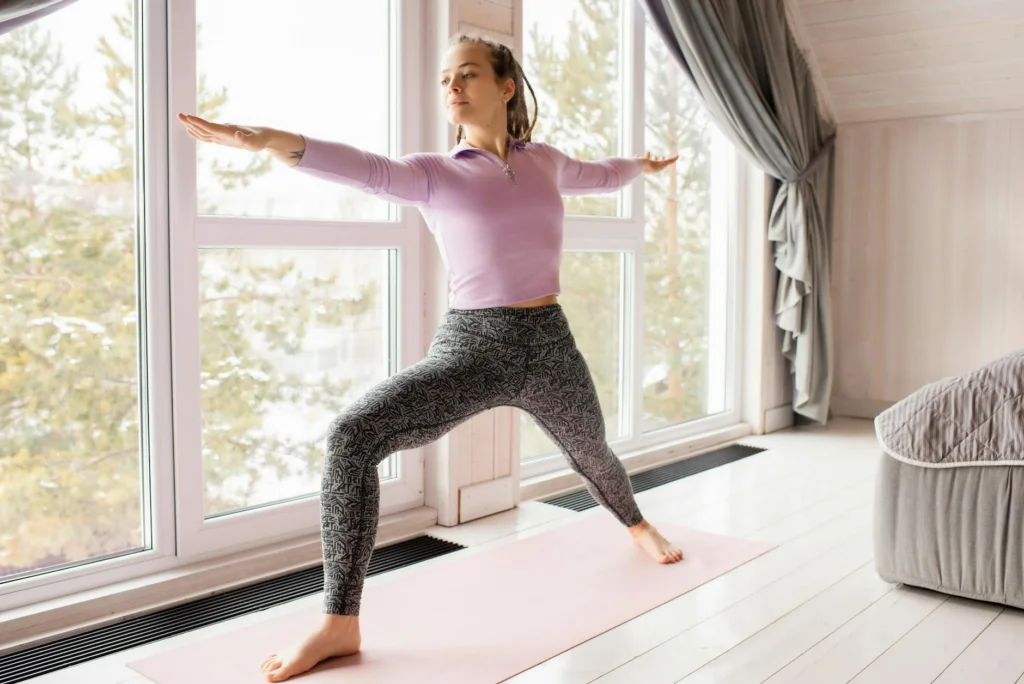
You’ll discover that yoga and pilates transcend the physical postures, weaving mental fortitude into your daily fabric through breath-centered practice that transforms how you navigate stress, setbacks, and unexpected challenges with unwavering composure.
The mat becomes your laboratory for resilience—each held warrior pose at 7:00 AM, each controlled pilates roll-up that demands core stability, quietly building the psychological strength you’ll access during difficult conversations, work pressures, and life’s inevitable curveballs.
Community classes anchor this growth, surrounding you with women who understand the journey, creating accountability partnerships that extend far beyond the studio walls into genuine friendships forged through shared vulnerability and mutual encouragement.
Begin with foundational poses like Mountain Pose and Child’s Pose, which teach you to ground yourself physically while cultivating the inner stillness that carries into every aspect of your life.
Building Mental Resilience Daily
Beyond flexibility and physical strength, yoga and Pilates serve as profound architects of mental fortitude, transforming your daily capacity to navigate life’s inevitable storms with grace and unwavering composure.
Each morning at 6:47 AM, you’ll discover these practices don’t merely stretch muscles—they rewire neural pathways. Your breath becomes an anchor. Your mind learns to observe thoughts without drowning in them.
- Breath awareness creates emotional regulation, teaching you to pause between trigger and reaction
- Balance poses build confidence in uncertainty, literally teaching your body to find stability in instability
- Mindful movement develops present-moment focus, pulling you from anxiety’s future-dwelling grip
- Progressive challenges cultivate resilience, proving you’re stronger than yesterday’s limitations suggested
Through consistent practice, you’ll carry this centered strength into boardrooms, difficult conversations, unexpected setbacks. Unshakeable.
Community Classes and Growth
Studio walls dissolve when you step into community classes, where thirty strangers become witnesses to your transformation and silent cheerleaders for breakthroughs you didn’t know you needed.
Your Tuesday 6:30 PM slot becomes sacred ritual. The instructor’s voice guides collective breathing—inhale for four counts, hold for seven. You’re stronger than the woman who entered three months ago.
| Week 1-4 | Week 5-8 | Week 9-12 |
|---|---|---|
| Basic poses, wobbly balance | Flowing sequences, steady breath | Advanced holds, confident movements |
| Self-conscious adjustments | Accepting gentle corrections | Offering encouragement to newcomers |
| Comparing yourself to others | Focusing inward completely | Leading by quiet example |
| Leaving drained but accomplished | Departing energized, centered | Walking taller through daily life |
Growth happens in collective silence. These women become your unspoken accountability partners, your Tuesday evening anchor points.
Cycling: Roll Solo or Join the Pack
When the morning air hits your face at 6:47 AM, crisp and clean against your cheekbones, you’ll understand why cycling has captured the hearts of women who refuse to let age define their adventures. The rhythmic pulse of pedals beneath your feet creates meditation in motion.
Solo rides offer sanctuary—just you, the road, and thoughts that finally have space to breathe. Group cycling transforms exercise into sisterhood, where conversations flow as naturally as your cadence.
Consider these cycling approaches:
- Weekend warrior rides covering 15-20 miles through local parks
- Commuter cycling replacing your Tuesday morning coffee run
- Club membership with women-focused cycling groups
- Indoor cycling classes during harsh weather months
Your cardiovascular system strengthens while stress dissolves into handlebar grips and gear shifts. Like running, cycling triggers your body to flood your system with endorphins, transforming each ride into a natural antidepressant session that lingers long after you’ve racked your bike.
Dancing: Move Your Body, Boost Your Confidence
Three beats into your first salsa class, something shifts—your shoulders drop from their defensive perch, your hips recollect rhythms they’ve carried since childhood, and suddenly you’re not thinking about grocery lists or quarterly reports.
Dancing returns you to your body in ways desk jobs never could. Salsa’s quick-quick-slow pattern teaches coordination while hip-hop builds explosive confidence through sharp isolations. Ballroom dancing demands partnership—learning to follow, then lead, translates into every relationship you’ll navigate.
Week One Protocol: Choose your style based on personality, not partner availability. Independent spirits gravitate toward contemporary; social butterflies thrive in partner dancing.
Physical Returns: Thirty minutes burns 200-300 calories while strengthening core muscles and improving balance. Your posture changes within weeks.
Confidence Multiplication: Movement becomes language. Your body speaks before your words catch up. Group dance classes build social confidence while connecting you with others who share your commitment to physical expression.
Swimming and Water Sports: Low-Impact, High-Reward Exercise
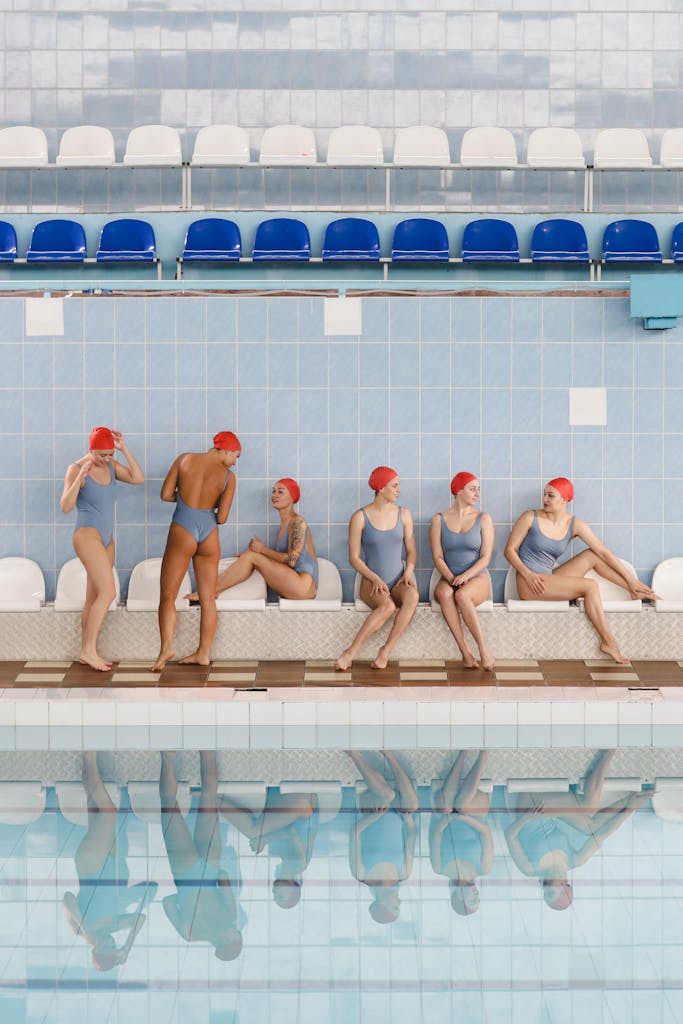
Your joints deserve the gentle embrace of water’s natural buoyancy, where every stroke becomes a meditation in motion and your body finds relief from decades of gravitational stress.
Whether you’re gliding through morning laps at 6:30 AM in the neighborhood pool, traversing a kayak through sun-dappled waterways, or balancing on a paddleboard as cool spray caresses your ankles, water sports offer that rare combination of cardiovascular challenge without the jarring impact your knees recollect from your twenties.
You’ll discover that aquatic communities form naturally around boat launches and pool decks, where shared enthusiasm for water’s healing properties creates connections deeper than small talk.
The repetitive, rhythmic motions of swimming activate your parasympathetic nervous system, creating the same calming effect that makes activities like knitting and coloring so effective at melting away workplace tension.
Joint-Friendly Fitness Benefits
As you step into your thirties and beyond, your joints begin whispering stories of morning stiffness, weekend warrior adventures that linger longer than expected, and the subtle reminders that high-impact activities now demand more recovery time than they once did. Water becomes your sanctuary, cradling each movement in buoyant support.
Swimming transforms your relationship with fitness through these joint-protective benefits:
- Buoyancy reduces impact by 90%, eliminating jarring stress on knees, hips, and spine
- Water resistance provides 12-15 times more strengthening than air-based exercises
- Hydrostatic pressure naturally reduces inflammation while supporting circulation
- Full-body engagement activates 70% more muscles than traditional cardio
Each stroke carries you through pain-free movement. Your shoulders roll smoothly. Your core stabilizes without strain. Recovery happens faster here.
Water Sport Variety Options
Beyond swimming’s rhythmic strokes lies an entire aquatic playground waiting to reshape your fitness journey. Stand-up paddleboarding transforms your core into a steady pillar while you glide across mirror-calm lakes at dawn, each stroke carving through water that reflects morning clouds.
Kayaking builds your shoulders incrementally, paddle after paddle, as you navigate winding rivers where herons stand motionless among cattails.
Water creates natural resistance without jarring impact—your joints float weightlessly while muscles work purposefully. Try aqua aerobics classes at 9 AM when pools are quietest, your body moving through liquid embrace.
Canoeing with friends becomes meditation in motion. Each splash, each rhythmic breath connects you to something primal. Water doesn’t lie about effort—it rewards consistency with strength you’ll feel climbing stairs, carrying groceries, living fully.
Building Aquatic Communities
Water sports naturally gather tribes of like-minded souls who understand that strength isn’t always measured in iron plates or treadmill miles. You’ll discover communities built around shared 6 a.m. lake launches, where sunrise reflects off calm water like scattered diamonds.
These connections form through:
- Local paddling clubs meeting every Saturday morning at designated launch points
- Swimming groups that embrace open-water challenges beyond chlorinated pools
- Stand-up paddleboard yoga sessions combining balance with mindful movement
- Kayaking meetups exploring hidden coves and waterways together
Your tribe emerges naturally. Shared equipment tips, weather discussions, post-activity coffee conversations—these moments weave lasting friendships. You’re not just joining activities; you’re entering circles where encouragement flows as freely as the currents you navigate together.
Rock Climbing: Mental Focus Meets Physical Challenge
When your fingers first touch the textured surface of an indoor climbing wall, you’ll discover that rock climbing demands something most hobbies don’t—the complete marriage of your mind and body in real time.
Each route becomes a vertical puzzle requiring methodical problem-solving. You’ll assess holds, plan sequences, adjust grip pressure. Your forearms will burn, your core will engage, but your mind must stay calm, calculated. No room for scattered thoughts here.
Month One: Focus on basic techniques—proper foot placement, efficient hand positioning, controlled breathing during ascents.
Months Two-Three: Build endurance through longer routes, develop trust in your equipment and abilities.
The mental clarity that emerges surprises most climbers. Complete presence. No mental chatter about work deadlines or relationship dynamics. Just you, gravity, and the next strategic move upward. Like pottery’s tactile activity, climbing requires your complete focus, effectively creating a digital detox while reducing stress through physical engagement.
Playing a Musical Instrument: Create Your Own Soundtrack
Your fingertips will recollect their first contact with piano keys, guitar strings, or violin bow long after the initial awkwardness fades—because learning an instrument at thirty-plus means you’re choosing deliberate transformation over comfortable routine.
Your cognitive function sharpens with each practice session. Research confirms that musical training rewires neural pathways, enhancing memory and concentration in ways that crossword puzzles simply can’t match.
- Choose based on lifestyle—piano for home-based practice, guitar for portability
- Commit to 20-minute daily sessions rather than sporadic marathon practices
- Use free online tutorials before investing in formal lessons
- Record yourself monthly to track tangible progress
The calluses on your fingertips become badges of persistence. Each stumbled chord progression teaches patience your younger self never possessed.
Calligraphy: The Art of Beautiful Writing
You’ll discover that calligraphy transforms the simple act of writing into something profound, something that connects your hand to centuries of human expression through the deliberate formation of each letter.
Your journey begins with understanding the essential tools—quality nibs, flowing ink, and smooth practice paper—then progresses through mastering basic strokes that become the foundation for elegant letterforms.
Whether you’re addressing wedding invitations, creating personalized stationery, or designing wall art for your home, you’ll find that this ancient craft offers both meditative focus and practical applications that make your mark on the modern world.
Essential Tools and Supplies
Before you can shape letters into flowing works of art, gathering the right tools transforms calligraphy from a frustrating struggle into a meditative practice. Your fingers deserve instruments that respond to your touch with precision.
Start with these essentials:
- Fountain pen with italic nib – Choose a Pilot Parallel or Lamy Joy for consistent ink flow
- High-quality paper – Rhodia or Clairefontaine prevents bleeding and feathering
- India ink or cartridges – Pigma or Sailor inks offer rich, permanent color
- Ruler and pencil – For creating invisible guidelines that keep your letters aligned
Quality matters here. Cheap tools fight against you, creating scratchy lines and uneven flow. Invest in one excellent pen rather than three mediocre ones. Your practice sheets will reward you with smooth, confident strokes that build muscle memory naturally.
Basic Strokes and Techniques
Every elegant letter emerges from five fundamental strokes that your hand must learn to execute with unconscious grace. The upstroke whispers across paper with feather-light pressure, creating hairline ascenders that dance skyward. Downstrokes demand your full commitment—press firmly, letting ink flow like dark honey as your nib travels earthward.
Minutes 1-5: Master the Oval
Circle your wrist in fluid motions, creating perfect egg shapes. Feel the rhythm. This becomes every ‘o’ and ‘a’ you’ll ever craft.
Minutes 6-10: Compound Curves
Connect two ovals, maintaining consistent slant. Your ‘n’ and ‘m’ live here.
Minutes 11-15: Ascender Loops
Stretch upward, then curve back down. These graceful arcs transform simple letters into poetry.
Practice fifteen minutes daily. Your muscle memory awakens gradually, then suddenly—pure magic flows from pen to paper.
Modern Practice Applications
While traditional calligraphy once served scribes and scholars, today’s beautiful writing transforms your everyday world into something extraordinary.
You’ll discover calligraphy’s power extends far beyond ancient manuscripts. Your modern pen becomes a bridge between mindfulness and creativity, turning ordinary moments into meditative practices.
Consider these contemporary applications:
- Wedding invitations that guests treasure as keepsakes
- Journal entries that slow your racing thoughts at 9 PM
- Hand-lettered quotes adorning your workspace walls
- Personalized gifts carrying deeper emotional weight than store-bought alternatives
Each stroke demands your complete presence. No multitasking exists here—only you, ink, and intentional movement. Your smartphone notifications fade as muscle memory develops through repetition.
The practice becomes sanctuary. A fifteen-minute session transforms chaotic Tuesday evenings into moments of profound calm, creating beauty while cultivating patience.
DIY and Upcycling Projects: Transform Trash Into Treasure

Since you’ve likely accumulated boxes of forgotten items in closets, garages, and storage spaces, those seemingly worthless objects represent untapped potential waiting for your creative vision. That chipped wooden chair becomes a statement piece with sandpaper and sage-colored paint. Mason jars transform into pendant lights with simple electrical kits from hardware stores.
Start small. Choose one item this weekend. Feel the satisfaction of your hands shaping something new from something discarded. The rough texture of weathered wood softening under your palm as you sand away decades of neglect.
Each project teaches patience, problem-solving, and resourcefulness—skills that extend beyond crafting. You’re not just creating functional beauty; you’re developing an eye for possibility. Seeing treasure where others see trash. Building confidence one transformed object at a time.
Nail Art: Express Yourself at Your Fingertips
Your fingertips become miniature canvases when you embrace nail art, transforming a simple manicure into wearable artwork that reflects your personality, mood, and creative vision. You’ll discover that mastering essential techniques—from precise dotting and clean geometric lines to delicate gradient blending—requires patience, steady hands, and the right collection of brushes, dotting tools, and high-quality polishes.
This accessible art form costs less than $50 to start, fits into evening routines, and offers immediate gratification as you watch intricate florals, abstract patterns, or seasonal themes emerge beneath your focused attention.
Creative Design Techniques
Though nail art might seem like a fleeting trend reserved for teenagers, it’s actually one of the most accessible and immediately gratifying creative outlets available to women over thirty. Your fingernails become miniature canvases, demanding precision while rewarding patience.
Start with these fundamental techniques:
- Dotting Tool Patterns – Create precise polka dots, flowers, and geometric designs using bobby pins or professional dotting tools
- Tape Striping – Achieve clean lines and color-blocking effects with painter’s tape applied to dry base coats
- Gradient Sponging – Blend two polish colors seamlessly using makeup sponges for ombre effects
- Freehand Brushwork – Develop steady-handed skills for intricate florals, abstract swirls, and personalized monograms
Each technique builds upon the last. Your muscle memory develops within three practice sessions, transforming shaky attempts into confident strokes that reflect your evolving artistic voice.
Essential Tools and Supplies
When you first approach the nail art supply aisle, the rainbow array of bottles and brushes might overwhelm your senses—yet beneath this colorful chaos lies a methodical system waiting to transform your creative vision into reality.
Your foundation requires three essential components: base coat, quality polish, and top coat. These aren’t luxuries—they’re architectural elements that guarantee your art endures beyond Tuesday.
| Category | Essential Item | Purpose |
|---|---|---|
| Base Layer | Ridge-filling base coat | Creates smooth canvas |
| Color | High-pigment polish | Provides vibrant coverage |
| Detail Work | Fine liner brush | Enables precise designs |
| Texture | Dotting tools | Creates patterns, gradients |
| Protection | Quick-dry top coat | Seals your masterpiece |
Start small. Purchase one quality brush, three complementary colors, and proper base/top coats. Your investment—roughly thirty dollars—unlocks endless Saturday afternoon possibilities.
Writing: Fiction, Poetry, or Personal Truth
Since silence holds every unwritten story, writing becomes the bridge between the thoughts that circle your mind at 2:47 AM and the words that finally find their home on paper.
Your fingers know this truth already—they’ve traced invisible letters across your thigh during meetings, crafted mental sentences while folding laundry. Now it’s time to trust them with ink.
Start here:
- Choose your vessel: A $3 notebook works as beautifully as expensive leather journals
- Set your timer: Fifteen minutes daily, preferably before dawn breaks your concentration
- Write badly first: Permission to create terrible first drafts liberates your authentic voice
- Read everything: Poetry collections, memoirs, fiction—fuel comes from consuming other writers’ courage
Whether you’re crafting fantasy worlds or excavating childhood memories, writing offers something irreplaceable: the discovery of who you become when nobody’s watching.
Geocaching: Real-World Treasure Hunting
The coordinates glowing on your phone screen—N 40° 45.123′ W 073° 58.456’—hold more mystery than any fictional plot you could craft on paper. Geocaching transforms mundane Saturday afternoons into detective work, where small waterproof containers hide beneath park benches, inside hollow trees, behind loose bricks.
Download the official app. Create your free account by 9:00 AM. Choose a nearby cache rated 1.5 difficulty—perfect for beginners. The GPS guides you within ten feet, then intuition takes over. You’ll examine fence posts, peer under bridges, run fingers along stone walls. That moment when your thumb grazes weathered plastic? Pure triumph.
Each logbook signature connects you to strangers who’ve stood exactly here. Some caches contain small treasures to trade. Adventure disguised as exercise. Purpose wrapped in exploration.
Joining a Book Club: Read Beyond Your Comfort Zone
Your reading habits have calcified into predictable patterns—the same genres, similar authors, familiar narrative structures that confirm rather than challenge your worldview. A book club disrupts this literary tunnel vision with deliberate force.
- Choose clubs with rotating leadership to guarantee diverse book selections beyond anyone’s singular taste
- Commit to finishing every assigned book, even when you’re tempted to abandon it after chapter three
- Prepare three specific discussion points before each meeting to engage meaningfully with others’ perspectives
- Document your evolving opinions in a reading journal, tracking how books shift your thinking over time
The magic happens at 7:30 PM Thursday evenings when you’re defending a memoir you initially despised, discovering nuanced arguments emerging from your mouth. Growth disguised as conversation.
Starting a YouTube Channel or Blog: Share Your Voice
You’ve reached that pivotal moment where your accumulated wisdom deserves a platform, and starting a YouTube channel or blog transforms your decades of experience into meaningful content that resonates with others who share your journey.
Finding your niche isn’t about chasing trends—it’s about identifying that intersection where your authentic expertise meets genuine curiosity, whether that’s sustainable living tips learned through fifteen years of trial and error, or career pivot strategies you’ve mastered through your own professional reinventions.
Building authentic community happens naturally when you consistently show up as yourself, sharing both the polished successes and the messy, real moments that prove you understand exactly what your audience faces at 2 AM when they’re questioning their choices.
Finding Your Niche
Something remarkable happens when you finally decide to share what matters most to you with the world—whether through the intimate lens of a video camera or the careful craft of written words on a screen. You discover your authentic voice emerges not from trends, but from your lived experiences.
Your niche lives at the intersection of your passion and others’ needs. Consider these four foundational questions:
- What conversations do you have that energize you completely?
- Which life lessons took you years to learn that you wish someone had shared earlier?
- What topics make you lose track of time when researching or discussing?
- Which problems do friends consistently ask your advice about?
Your answers reveal your natural territory. The sweet spot isn’t perfection—it’s genuine expertise wrapped in relatability.
Building Authentic Community
Authentic community doesn’t form through follower counts or engagement metrics—it crystallizes when you consistently show up as yourself, week after week, sharing the specific knowledge that transformed your own life.
Your voice carries weight precisely because it’s been tested by experience. Document your Tuesday morning struggles with sourdough starter failure. Share the exact moment you realized your garden wasn’t just about tomatoes—it was about reclaiming agency over your food supply.
| Content Pillar | Authentic Share |
|---|---|
| Weekly Tutorials | Your actual mistakes, unedited |
| Behind-the-Scenes | 6 AM setup, coffee-stained notes |
| Q&A Sessions | Real questions, honest answers |
| Progress Updates | Month 3: still learning |
Community forms around vulnerability, not perfection. Your hesitations become someone else’s permission to begin.
Wine Tasting: Develop Your Palate and Social Circle

Most women discover their relationship with wine shifts dramatically after thirty—what once served as simple social lubrication transforms into something far more nuanced, a gateway to sophisticated pleasures that marry intellectual curiosity with sensory adventure.
Your palate becomes your teacher. Each tasting builds neural pathways that recognize subtle differences between terroir, vintage, and varietal—transforming what was once “red” or “white” into precise vocabulary of stone fruit, minerality, and oak.
Transform casual sipping into intentional exploration:
- Join local wine clubs where conversation flows as freely as the pour
- Attend vineyard tastings every second Saturday for three months
- Create tasting notes using specific descriptors like “wet limestone” or “Meyer lemon zest”
- Host themed tastings comparing regional expressions of single varietals
Community emerges naturally around shared discovery.
Tennis or Group Sports: Competitive Fun With Friends
While wine tasting cultivates refinement through stillness and contemplation, your body craves the explosive joy of movement, competition, and shared victory—which tennis and group sports deliver with mathematical precision every Tuesday evening at 6:30 PM.
Tennis transforms you into a strategist. Your forehand slice cuts through autumn air, the satisfying *thwack* of racquet meeting ball reverberating through your bones. You’ll discover muscles you’d forgotten existed—your calves burning deliciously after chasing down impossible shots.
Tennis awakens your inner strategist as racquet meets ball, that satisfying *thwack* reverberating through forgotten muscles now burning with delicious life.
Group sports amplify this rush exponentially. Soccer leagues welcome beginners at 7 PM sharp, where grass-stained knees become badges of honor. Volleyball creates instant intimacy through shared diving saves and celebratory high-fives.
The magic isn’t the competition itself—it’s witnessing your own fierce determination emerge. That primal satisfaction when your serve lands perfectly in the corner. Pure joy.
Learning a New Language: Open Doors to New Worlds
Learning a new language at thirty-plus transforms your brain into a sharper, more adaptable instrument—one that builds fresh neural pathways with each conjugation you master, each conversation you attempt. You’ll discover that French opens café doors in Provence, Spanish grants/facilitates/enables genuine connections in Buenos Aires, and Mandarin reveals business opportunities across Asia’s bustling markets.
The beauty lies in how modern methods—fifteen-minute Duolingo sessions during your 7:30 AM coffee, weekend conversation exchanges at local libraries, Netflix shows with subtitles—make fluency achievable without the rigid classroom structures of your youth.
Cognitive Benefits and Brainpower
Every time you wrap your tongue around a foreign syllable—whether it’s the rolling R in Spanish “rrroja” or the guttural depth of German “ach”—you’re literally rewiring your brain’s neural pathways, creating new connections that didn’t exist twenty minutes earlier.
This cognitive restructuring delivers measurable benefits:
- Enhanced memory retention through multilingual processing demands
- Improved problem-solving abilities as your brain navigates linguistic puzzles
- Increased multitasking efficiency from constant language-switching practice
- Delayed cognitive decline with studies showing bilingual brains aging more gracefully
Your prefrontal cortex strengthens like a muscle under resistance training. Each conjugation you master, each accent you attempt builds executive function. The woman who stumbled over “bonjour” at 9:15 AM discovers sharper focus during afternoon meetings. Language learning doesn’t just open cultural doors—it constructs mental architecture that supports everything else you’ll tackle.
Cultural Connections and Travel
Beyond sharpening mental acuity, language acquisition becomes your passport to authentic human connection across continents. When you dedicate fifteen minutes each morning to French pronunciation, you’re not just memorizing vocabulary—you’re preparing for conversations with Parisian café owners who’ll share their grandmother’s stories.
Download Duolingo at 6:30 AM. Complete one lesson before coffee. By month three, you’ll recognize patterns in romance languages that access Italian, Spanish, Portuguese like sequential doors opening.
The real magic happens when you stumble through your first conversation with a native speaker. Their patient correction of your verb tenses becomes intimacy. Your mispronounced “gracias” earns genuine smiles from Madrid shopkeepers.
Language learning transforms travel from tourist consumption into cultural participation. You’ll order off untranslated menus, navigate local buses, befriend strangers who become lifelong correspondents.
Practical Learning Methods
The most effective language acquisition unfolds through layered immersion—your phone switched to Spanish, your morning podcast in Italian, your evening Netflix queue populated with French films bearing subtitles in that same target language. This systematic approach transforms idle moments into learning opportunities.
Your brain craves structure within chaos. Consider these proven acceleration methods:
- 7:30 AM ritual: Twenty minutes with language learning apps before coffee
- Lunch break conversations: Video calls with native speakers through exchange platforms
- Evening journaling: Three sentences daily in your target language
- Weekend market visits: Ordering groceries from international vendors using new vocabulary
Language becomes muscle memory through repetition, not perfection. You’ll stumble through conversations, mispronounce words, feel foolish. Embrace this vulnerability—it signals growth occurring beneath consciousness.
Reading for Personal Enrichment: Feed Your Mind Daily
Books have always held the power to transform minds, but after thirty, reading becomes something deeper—a deliberate act of self-cultivation that shapes who you’re becoming. Choose your literary companions with intention.
Fiction develops empathy through complex characters navigating through messy situations you recognize. Nonfiction builds expertise in subjects that fuel your curiosity about leadership, psychology, or history.
Create reading rituals that honor this practice. 6:30 AM with coffee, pages crisp between your fingers. The satisfying weight of a hardcover book. 9 PM wind-down with poetry that settles your thoughts.
Track your journey. Write margin notes that capture your evolving perspectives. Keep a reading journal—not for performance, but for recalling how each book changed your thinking. This isn’t escapism anymore. Pure intellectual nourishment.
Attending Lectures and Workshops: Never Stop Learning

Reading feeds your mind in solitude, but learning alongside others ignites something different—the electric buzz of shared discovery, the challenge of real-time questions that push your thinking beyond comfortable boundaries.
You’ll find yourself leaning forward at 7 PM Tuesday lectures, pen poised over notebook margins, as concepts click into place through collective dialogue. The woman beside you raises her hand, voicing the exact question swirling in your thoughts.
Start exploring these learning opportunities:
- University extension programs offering evening courses in psychology, literature, or business
- Museum workshops combining hands-on creation with expert instruction
- Professional development seminars advancing your career while expanding networks
- Community college non-credit classes exploring photography, coding, or ancient civilizations
Choose topics that whisper urgently to your curiosity. Growth happens when intellectual hunger meets structured guidance.
Podcasting: Research, Record, and Connect
Your voice carries stories, insights, and expertise that countless listeners crave—yet most women never realize the profound impact their perspectives could have rippling across thousands of earbuds worldwide. Podcasting transforms your accumulated wisdom into intimate conversations with strangers who become devoted followers.
Start simple: Record fifteen-minute episodes using your smartphone’s voice memo app. Choose topics where you’ve earned hard-won expertise—career pivots, motherhood challenges, creative breakthroughs. Your authenticity matters more than perfect audio quality.
Research becomes addictive as you dive deep into guest backgrounds, craft thoughtful questions, and uncover overlooked angles on familiar subjects. Each episode builds your communication skills while expanding your network exponentially.
Upload to Anchor or Buzzsprout within thirty days of recording. Consistency breeds loyalty. Your voice becomes the trusted companion accompanying morning commutes, evening walks, weekend chores.
Studying History or Personal Development: Grow Your Perspective
While podcasting amplifies your voice outward, studying history and personal development turns that same curiosity inward, transforming you into both archaeologist and architect of human experience.
Transform curiosity inward—become both archaeologist of ancient wisdom and architect of your evolving self.
You’ll discover patterns that repeat across centuries—how civilizations rise, how individuals overcome impossible odds. Start with one 20-minute session daily at 6:00 AM, when your mind craves substance over social media scrolling.
Choose your exploration:
- Ancient civilizations: Study Rome’s political strategies, Egypt’s engineering marvels
- Biographical deep-dives: Eleanor Roosevelt’s resilience, Marie Curie’s determination
- Philosophy foundations: Stoicism for modern stress, Buddhist mindfulness practices
- Psychology classics: Jung’s shadow work, Frankl’s meaning-making frameworks
This isn’t passive consumption. You’re mining wisdom that’s survived millennia, extracting tools that transform how you navigate relationships, career pivots, and personal challenges.
Archery: Focus Your Mind, Strengthen Your Body
Though history teaches us patience through the ages, archery demands it in the present moment—arrow nocked, breath held, target unwavering ahead.
Your first lesson begins with stance: feet shoulder-width apart, left foot forward if you’re right-handed. Feel the bowstring’s tension against your fingertips—index above the arrow, middle and ring below. Draw back slowly, anchoring at the corner of your mouth. Your shoulder blades squeeze together.
The release comes naturally. Don’t overthink it.
Indoor ranges offer year-round practice, with targets typically set at twenty yards for beginners. Equipment rentals run fifteen to twenty-five dollars per session. Within three months of weekly practice, you’ll notice improved posture, stronger back muscles, enhanced focus.
Each arrow teaches precision. Each bullseye builds confidence. Each miss refines technique.
Ancient wisdom, modern strength.
Surfing or Skateboarding: Balance Meets Adventure

Where archery teaches stillness, the ocean and pavement demand fluid motion—your body learning to dance with forces that won’t wait for perfect form.
Both surfing and skateboarding strip away pretense, demanding presence. You’ll discover muscles you’d forgotten, balance systems awakening after decades of desk-bound dormancy. The ocean’s rhythm becomes your metronome; concrete’s unforgiving surface your teacher.
Your progression roadmap:
- Week 1-2: Master basic stance on stable ground, feet shoulder-width apart
- Week 3-4: Practice weight shifts, 30-second balance holds daily
- Month 2: Attempt gentle waves or slight inclines with protective gear
- Month 3+: Build confidence through consistent 45-minute sessions
Each fall teaches resilience. Each successful ride builds unshakeable confidence that translates far beyond board and wave. You’re not just learning balance—you’re reclaiming your body’s wisdom.
Horseback Riding: Bond With Animals While Getting Active
Four legs carry stories your two can’t tell—the rhythmic thunder of hooves against earth, the gentle whoosh of breath from a thousand-pound creature who chooses to trust your hands on the reins.
This partnership demands presence. Complete, unwavering attention. Your first lesson begins with grooming: fifteen minutes of brushing, curry comb in circular motions across shoulders and flanks. The horse’s skin twitches beneath your touch. Trust building, one stroke at a time.
Mount from the left side. Always. Your instructor’s voice guides you through posting trot at 8 mph, finding rhythm with the horse’s gait. Rise, sit. Rise, sit. Your core strengthens without gym fluorescence.
After thirty minutes, dismount with shaking legs. Tomorrow, you’ll crave this communion again. The barn’s scent of hay and leather becomes your sanctuary.
Scuba Diving or Snorkeling: Explore Underwater Worlds
Twenty feet below the surface, silence replaces every earthbound sound—no hoofbeats, no wind through trees, only the measured rhythm of your own breath through the regulator. This underwater domain demands respect, preparation, and certification that transforms fear into wonder.
Your progression follows deliberate stages:
- Open Water Certification (3-4 days): Master buoyancy control, emergency procedures, and equipment checks in controlled environments
- Local Dive Sites (Weeks 2-8): Practice navigation, underwater photography, and marine life identification in familiar waters
- Advanced Training (Month 3): Deep diving, night diving, and wreck exploration expand your underwater vocabulary
- Destination Diving: Coral reefs, kelp forests, and cenotes reward your commitment with breathtaking encounters
Each descent reveals ecosystems untouched by surface chaos. Complete stillness. Your movements become meditation, your breathing becomes prayer, your presence becomes part of something infinitely larger.
Skydiving or Bungee Jumping: Embrace the Ultimate Adrenaline Rush
When gravity becomes your teacher rather than your master, the lessons learned in those first few seconds of freefall reshape everything you thought you knew about fear, trust, and your own capacity for courage.
Fear transforms from an enemy into a compass when you surrender to the fall and discover what lies beyond the edge of everything familiar.
First Jump Protocol: 0-15 Seconds
Your tandem instructor clips you in at 13,000 feet. The door opens. Wind velocity: 120 mph. You shuffle forward, toes dangling over absolute emptiness. Three seconds of terror. Then release.
The Physical Reality
Terminal velocity hits at exactly 12 seconds—your body moves at 120 mph through crystalline air. Your lungs compress, expand, recollect how to breathe. The parachute deploys at 5,000 feet with a gentle tug upward.
Post-Landing Integration
You’ll stand on solid ground, legs trembling, synapses firing with unprecedented clarity. This isn’t just adrenaline—it’s recalibration. Every subsequent challenge becomes measurable against those thirty seconds when you chose to jump anyway.
Conclusion
You’ll discover something remarkable: the moment you commit to one meaningful pursuit, others naturally align. That hiking trail you’ve been postponing? It’s waiting. Your hands, meant for creating something lasting—pottery, gardens, or capturing birds through binoculars—they’re ready. Start tomorrow at 6 AM with a single step outside your door. Your thirties aren’t about finding yourself; they’re about becoming who you’ve always been beneath the surface.


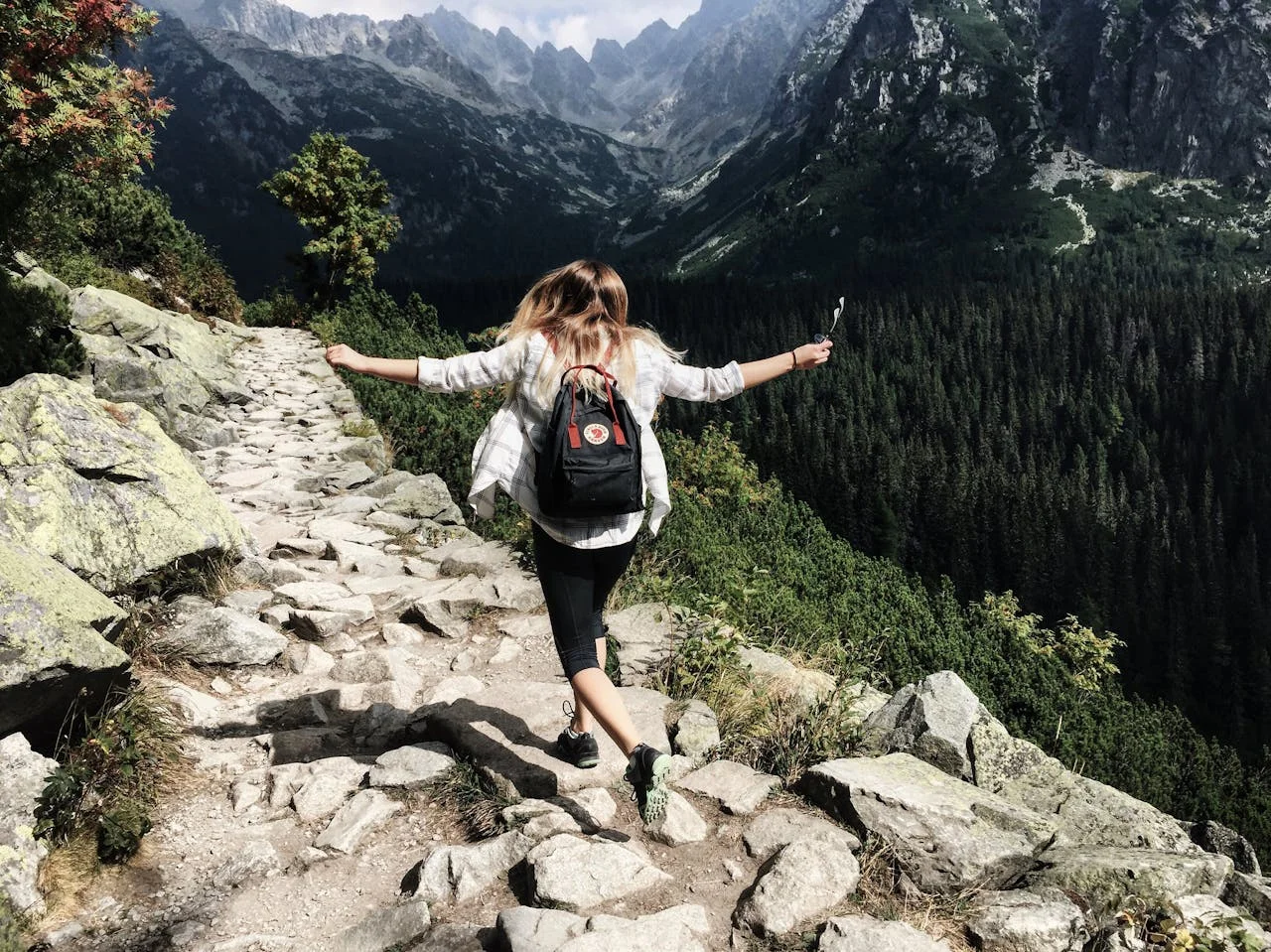
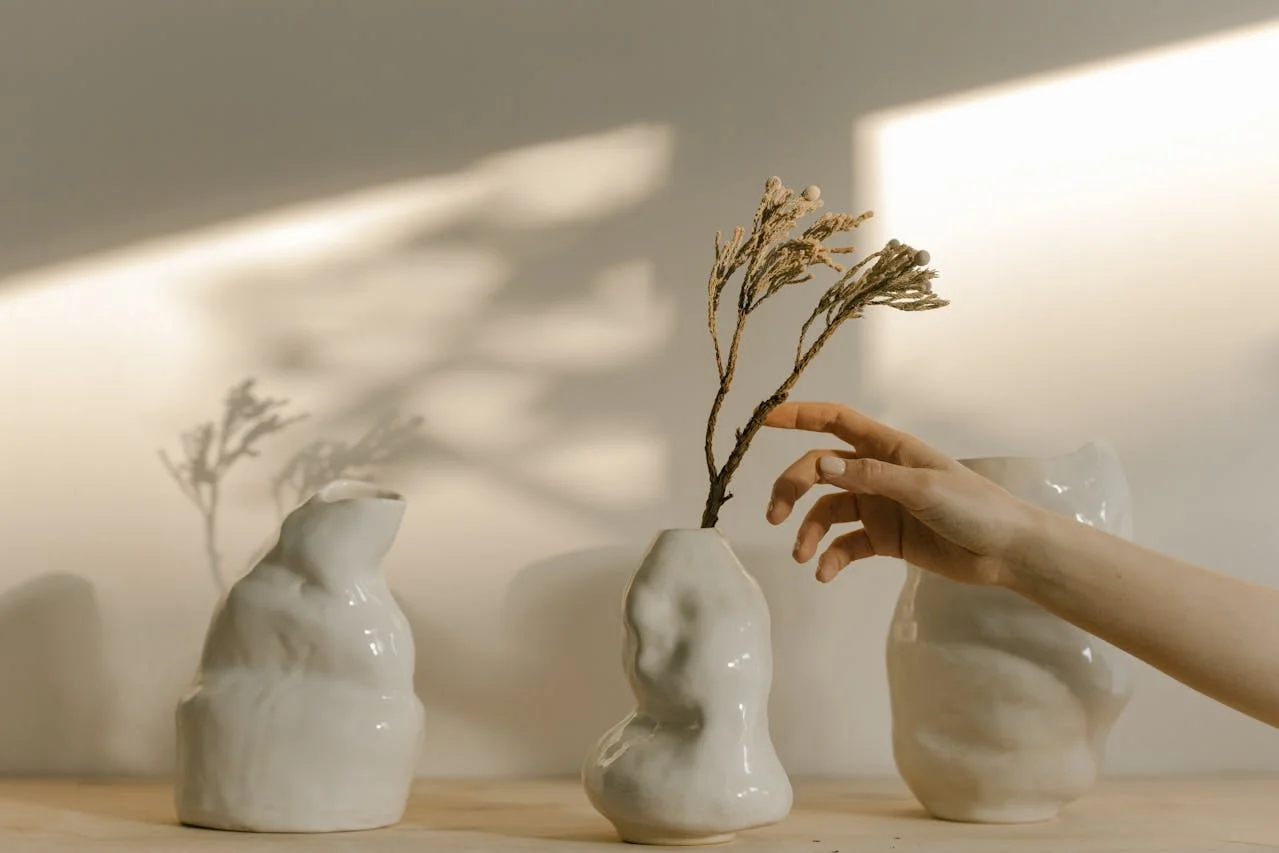
Leave a Reply